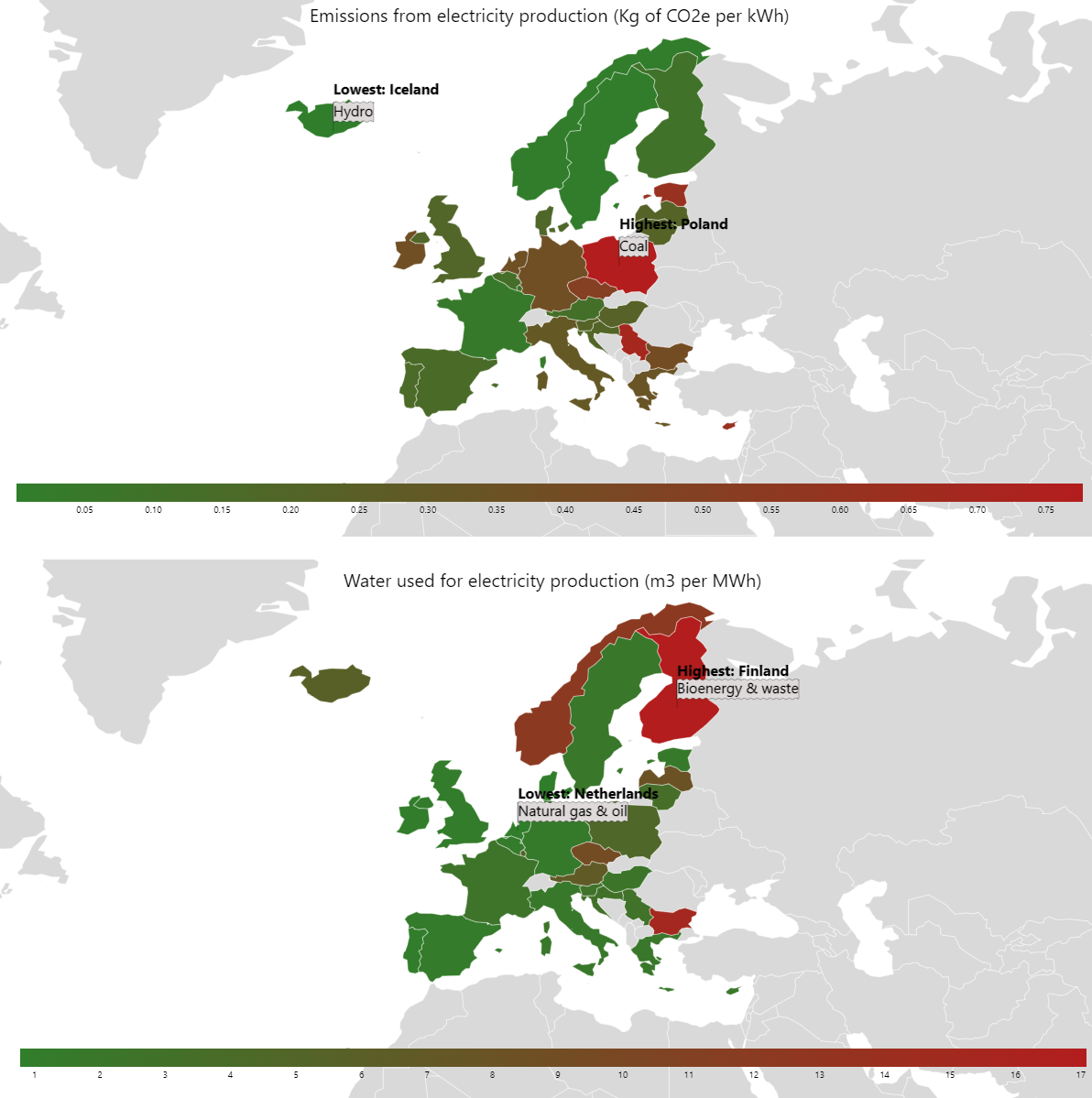Understanding the environmental impact of electricity: beyond emissions
Nour Rteil | April 4, 2024

As the demand for digital services continues to grow, so does the energy consumption of data centers. With environmental sustainability becoming a pressing concern, it's crucial to consider the location of data centers, particularly in relation to the source of energy they use.
Greenhouse Gas Emissions
The environmental footprint of data centers is primarily influenced by the sources of energy they utilize. Different sources produce different amounts of emissions.
• Fossil fuels (coal, oil, and natural gas combustion) emit significant amounts of carbon dioxide (CO2), sulfur dioxide (SO2), nitrogen oxides (NOx), particulate matter, and other pollutants, contributing to air pollution and climate change.
• On the other hand, solar and wind energy generation produce electricity without emitting greenhouse gases during operation, but emissions may occur during manufacturing, transportation, and installation. The same applies to hydropower; which emitts GHG during the constuction of the dams and reservoir decomposition, and nuclear power; which emitts GHG during the mining, milling, enrichment, and transportation of uranium fuel, as well as from the construction and decommissioning of nuclear power plants.
• Biomass releases CO2, methane, and nitrous oxide during combustion, but it is considered carbon-neutral if the carbon emitted is offset by the carbon absorbed during biomass growth. However, emissions also occur from land use changes, agricultural practices, and transportation of biomass feedstock.
• Geothermal power plants emit minimal greenhouse gases during electricity generation, but emissions may occur during geothermal fluid handling and construction activities. Geothermal energy is generally considered one of the cleanest energy sources in terms of emissions.
Whilst "renewable" sources (solar, wind, hydro, nuclear, biomass and geothermal) generally produce lower emissions and air pollutants than fossil fuels (coal, oil, natural gas), the environmental impact of electricity production goes beyond just the emissions.
Water Resources
Electricity generation often requires water for cooling, particularly in thermoelectric power plants (coal, nuclear, natural gas) and hydropower plants as discussed in our previous blog. The amount of water used and its impact on local water resources depend on the type of cooling technology used and the availability of water in the region.
For example, the Microsoft Data Center in Boydton, Virginia, employs an innovative cooling system that utilizes recycled wastewater for cooling purposes. By recycling wastewater instead of drawing from freshwater sources, Microsoft reduces its reliance on local water resources and minimizes its environmental impact on water availability and quality in the region.
It is often recommended to build/use IT services in data centers located in regions with low CO2e per kWh, without considering the impact on water resources. Finland, for example, generates relatively low emissions but uses substantial amount of water for its electricity production. This is because Finland’s main energy source for production is Biofuels & waste (52.4%) followed by Nuclear (34.3%).
With water scarcity affecting 29% of the EU territory in 2019, and the situation only getting worse, this issue demands increased attention.
Biodiversity and Land
The impact of electricity production on biodiversity and land is equally important. While fossil fuel extraction and mining activities result in significant habitat destruction, land degradation, and ecosystem disruption, large-scale renewable energy installations (such as solar farms, wind farms, and hydropower dams) also affect wildlife and ecosystems, albeit to a lesser extent than fossil fuels.
The Ivanpah Solar Electric Generating System in California, one of the world's largest solar power plants, demonstrates the impact of renewable energy installations on biodiversity. The construction of this solar farm involved clearing large areas of desert habitat, displacing native plant and animal species.
Conclusion
When proximity is not an issue, opting for “greener” energy sources and choosing the right location for the data center is crucial. Transitioning towards better energy sources is an essential step to building a more sustainable future. However, that alone is not sufficient because 1. there are practical limitations to the amount of energy being generated and the infrastructure required to deliver it and 2. the environmental impact of renewable sources (beyond emissions) is often not fully assessed. That's why it's important to reduce the overall energy consumption in data centers and address inefficiencies, irrespective of the energy source utilized.